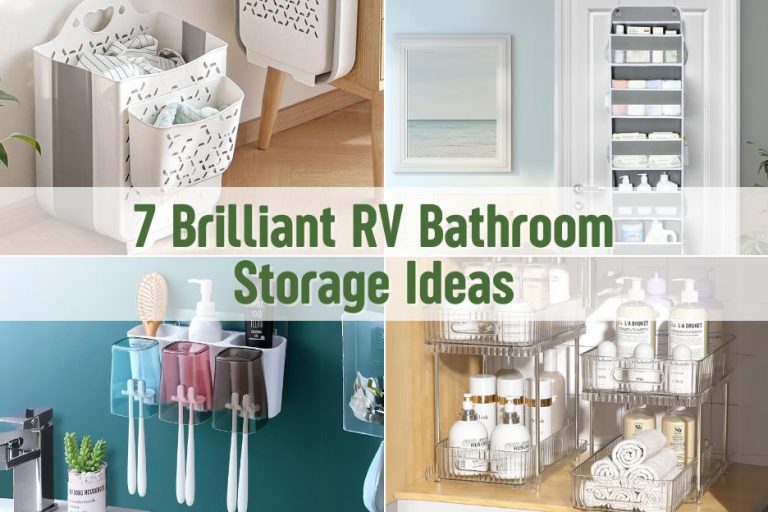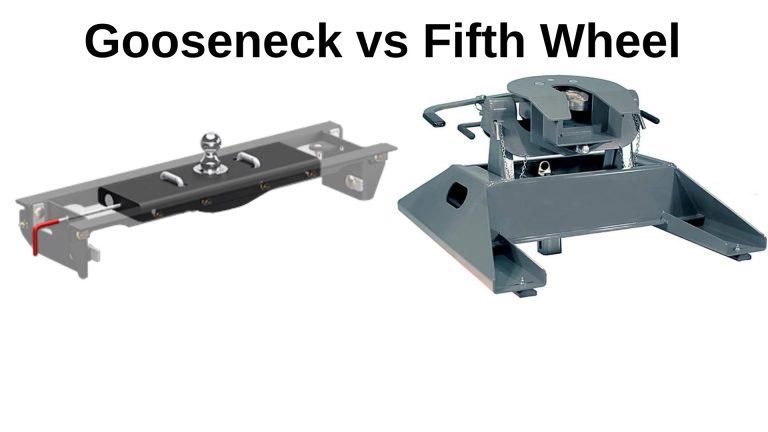How To Make RV Furnace More Efficient: 9 Options You Should Know
Do you know how to make RV furnace more efficient? With the price of energy constantly rising, it’s important to take steps to ensure that your RV is running as efficiently as possible. In this blog post, we’ll discuss 6 simple and cost-effective methods for improving the efficiency of your RV furnace.
Read on to learn more about how you can save money on your energy bills and reduce your carbon footprint!
Here, you will also read about:
- The different useful options to make an RV energy efficient
- Alternative sources like RV heaters to heat an RV without propane
- The essential accessories to keep your RV warm in winter.
Table of Contents
Is It Possible To Make Your RV Furnace More Efficient?
Yes, it is possible to make your RV furnace more efficient and save money on propane costs. Here are some tips to get you started:
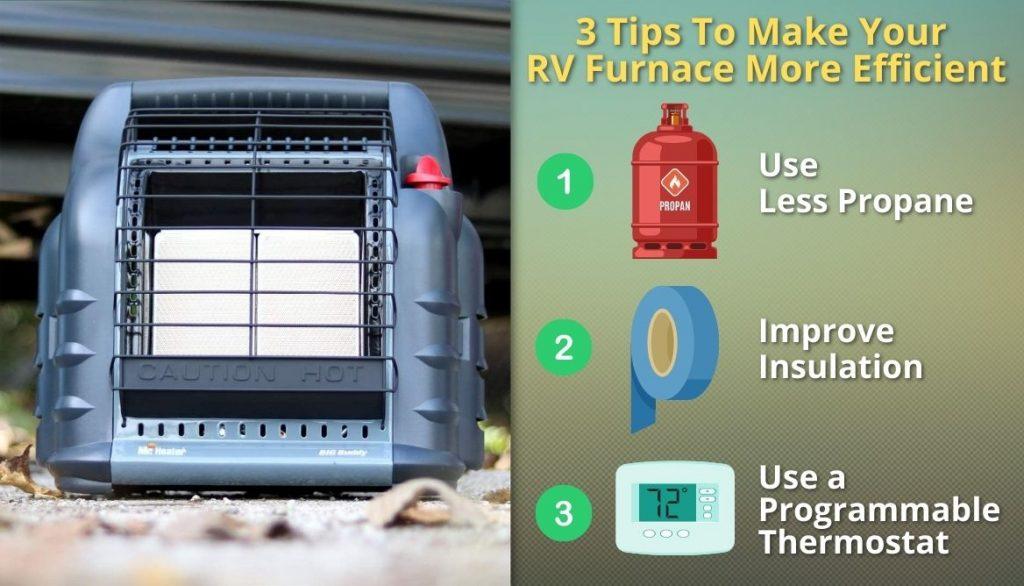
- Use Less Propane: Make sure your RV furnace is adjusted correctly so it uses the right amount of propane. Consider upgrading to a low-profile or catalytic heater which uses less fuel than traditional models.
- Improve Insulation: Check that your RV is properly insulated and sealed. Replace old or worn weatherstripping and caulk any gaps or cracks in the walls, windows, or doors. This will help keep the heat in and lower your energy costs.
- Use a Programmable Thermostat: Install a programmable thermostat to regulate temperatures while you’re away. This way, you won’t be wasting energy heating an empty RV.
How To Make Your RV Energy Efficient – Options
If you’re an RV enthusiast, you know that one of the biggest costs of owning an RV is the energy bill. But there are ways to make your RV energy efficient and save money while still staying comfortable. Here, we’ll look at some different options for making your RV energy efficient.
1. Average Electricity Usage
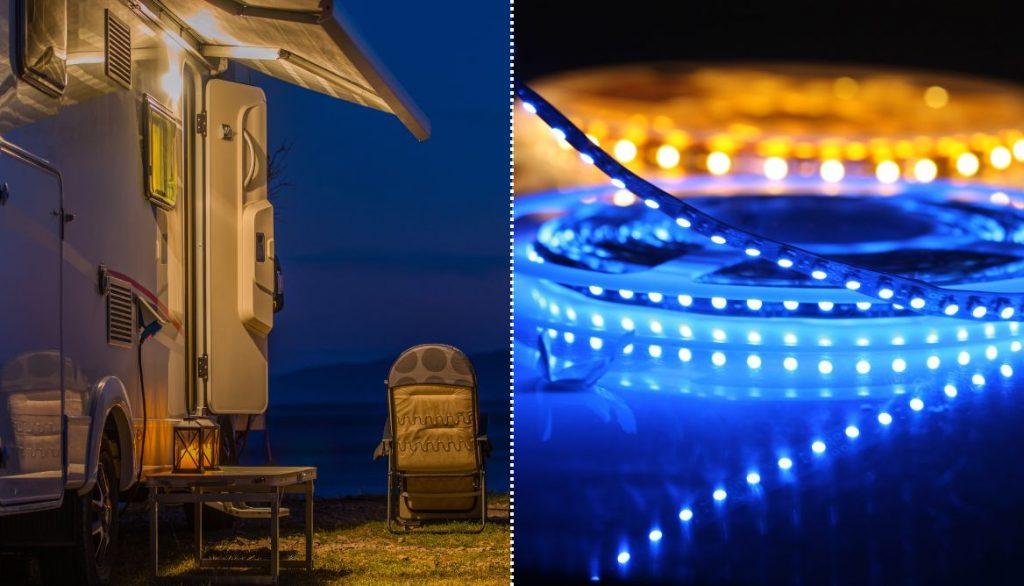
The amount of electricity used in an RV varies greatly, depending on the size and type of unit and how many people are living inside. However, the average RV typically uses approximately 12 to 15 amps per hour or around 180 to 270 kWh of electricity per month. This means that electricity is one of the largest expenses for RV owners, and can add up quickly.
It is important to be aware of how much energy you are using and look for ways to conserve energy to save money. Some of the most common ways to reduce your electricity usage include:
- Turning off lights and appliances when they are not in use
- Investing in energy-efficient appliances.
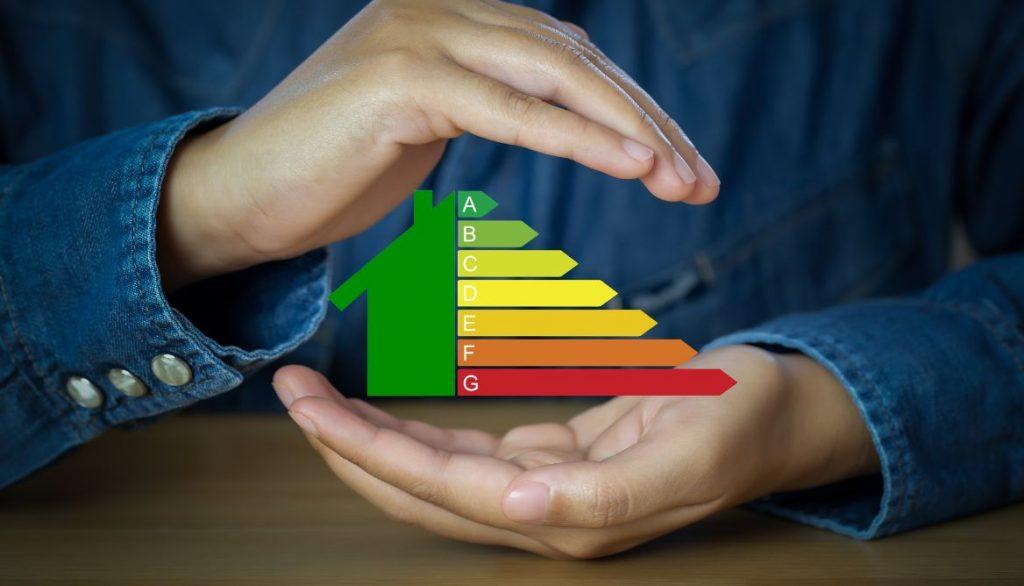
There are also several modifications about your electricity usage you can make to your RV to ensure it is as energy efficient as possible. These include:
- Switching to LED lights
- Insulating your walls and windows
- Using energy-efficient air conditioning units.
2. Install Solar Panels
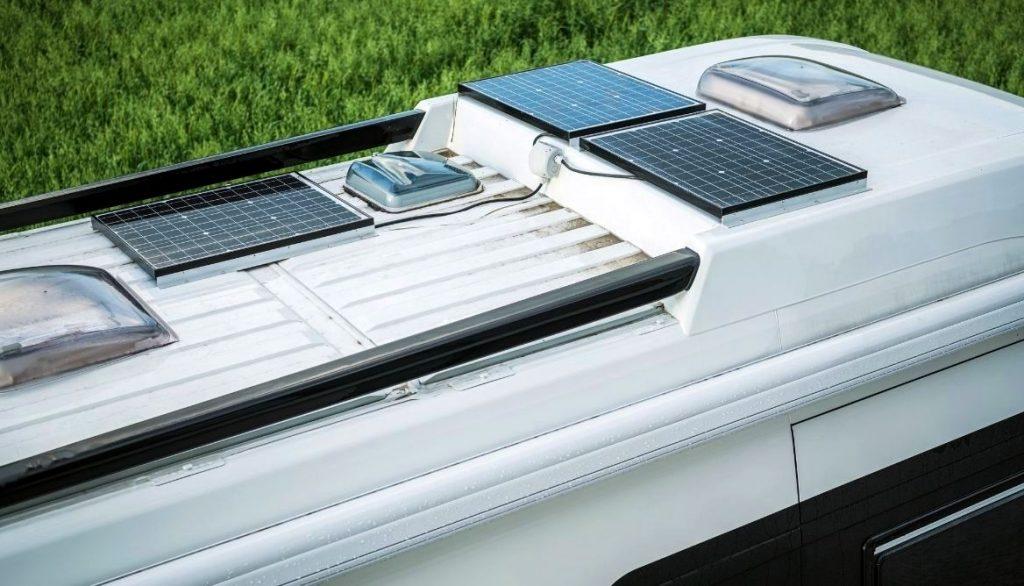
Adding a solar panel to your RV can be an excellent way to make it more energy efficient and save you money in the long run. Solar panels are typically made up of multiple photovoltaic cells, which use sunlight to generate electricity.
Installation process
Installing a solar panel requires some basic knowledge of electricity, so it is best to consult with a professional for help with this project. The installation process involves:
- Positioning the panel
- Connecting it to an inverter
- And then wiring it into the RV’s electrical system.
In addition to providing renewable energy, a solar panel will reduce your dependence on a generator or utility grid and lower your monthly energy bills.
3. Use Insulation
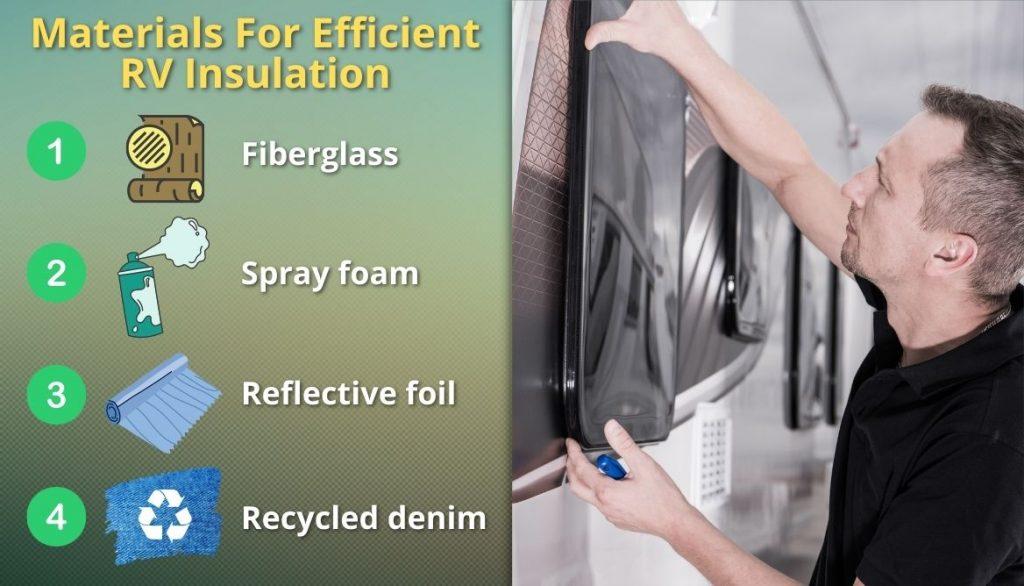
Adding insulation to an RV is one of the best ways to make it energy efficient. Insulation helps to keep warm air in and cold air out, saving energy and money. Proper insulation can be added to the walls, floors, windows, and ceiling of an RV to ensure maximum efficiency.
The materials used for insulated RV depend on the type of RV and the climate that the RV will be in. The following materials can be used to effectively insulate your RV:
- Fiberglass
- Spray foam
- Reflective foil
- Recycled denim
Be sure to consult a professional before you begin any insulation project as improper installation can lead to damaging and costly repairs.
Kind of Insulation | Pros | Cons |
Spray Foam: |
|
|
Rigid Foam: |
|
|
Fiberglass: |
|
|
4. Seal Air Leaks
Air leaks can account for up to 30% of your energy consumption. Sealing air leaks in your RV is a great way to improve its energy efficiency. It is important to check for gaps around RV windows, doors, wood stoves, and walls that could be letting in warm or cool air.
- Make sure to seal any cracks, crevices, and other openings with weather stripping or caulk. Also, check for worn seals on windows and doors and replace them if necessary.
- Lastly, it is important to use a quality sealant on the roof of your RV to ensure no air is escaping.
With these tips, you can save money and energy by sealing air leaks in your RV.
5. Insulate Your Water Lines
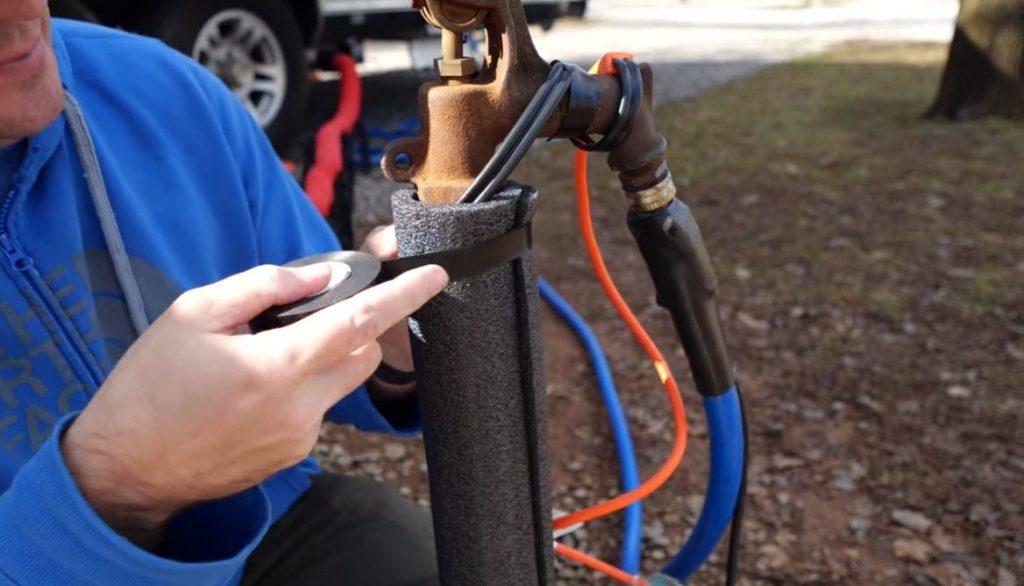
If you plan to stay in your RV for a longer period, you should consider insulating your water lines. This can help keep your RV from losing too much heat or cold and help you save energy.
- For example, if your RV is located in an area with colder winters, it’s important to insulate the water lines so that water doesn’t freeze in them. You can use pipe insulation for this. Additionally, if you are in an area with high summer temperatures, insulating your water lines can help keep the water cooler for longer.
This can help reduce your cooling costs and make your RV more comfortable during the hot summer months.
Precautions to Consider While Insulating Your RV’s Water Lines:
- Measure the size of your water lines before purchasing insulation so you get the right fit.
- Seal any exposed seams and gaps with tape or caulk to ensure proper insulation.
- Make sure that your insulation is designed for use in damp environments, as water lines are often exposed to moisture.
- Cut the insulation carefully, using sharp scissors or a knife, to ensure it fits properly.
- If using spray foam insulation, be sure to wear protective clothing and a respirator, as the fumes can be hazardous.
6. Make Use Of Skirting
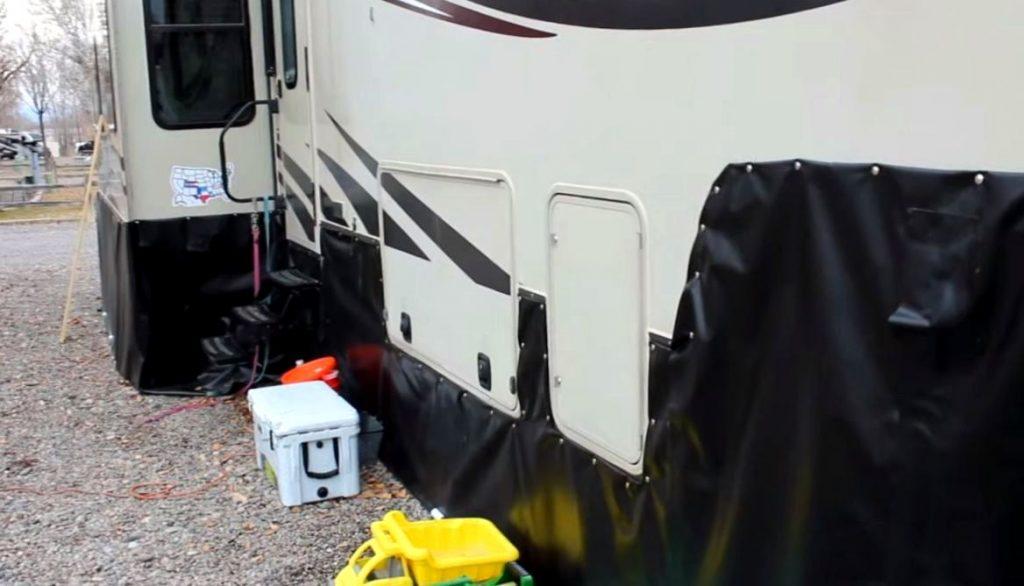
Skirting is an effective way to increase your RV’s energy efficiency. It works by trapping the high-temperature air in and around the RV, keeping it warmer in the winter and cooler in the summer. It also prevents wind from getting under the RV and causing drafts or damage to the unit.
Skirting can be bought in a variety of materials such as vinyl, foam, or mesh, and is usually installed along the sides of your RV or around the bottom of your rig. Skirting should be used during winter months to keep your RV well-insulated and prevent heat loss.
In addition, using skirting can help reduce the amount of debris that accumulates underneath your RV over time.
7. Increase RV Furnaces Efficiency

They are notorious for using up a lot of energy, but there are several ways to make your RV furnace more efficient and save money.
- First, ensure your furnace filter is clean by replacing it at least once a year. A dirty filter reduces airflow, making the furnace work harder than necessary and leading to an increase in energy consumption.
- Next, try to keep your RV warm when you’re inside so that the furnace does not have to work as hard. This can be accomplished by installing curtains and shades to reduce drafts, or by adding insulation to your walls and floors.
By following these steps, you can significantly reduce the amount of energy your insulated RV furnace consumes, resulting in lower energy bills and increased comfort.
8. Make Sure Air Conditioner Is Running Efficiently
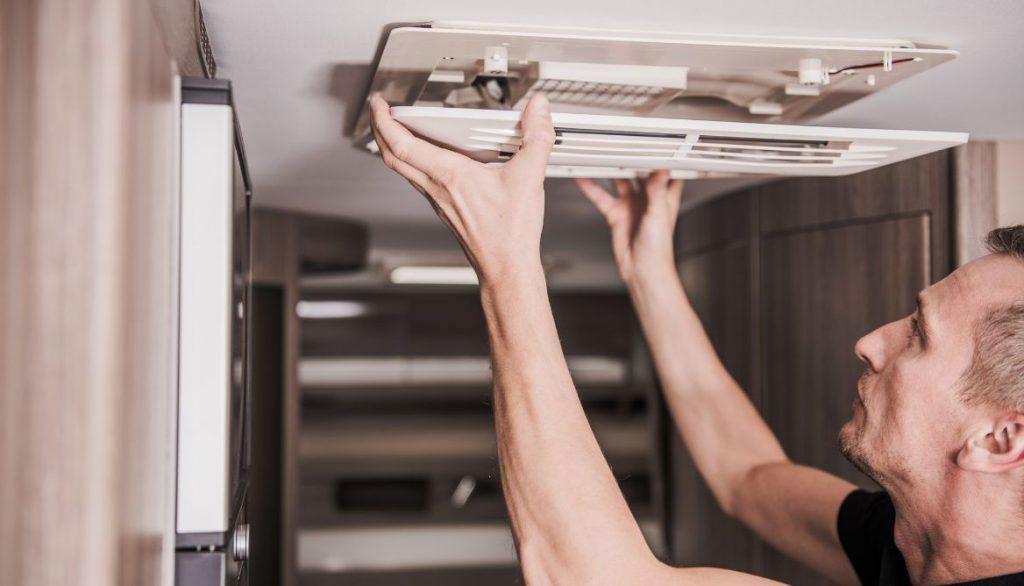
If your RV is more than 10 years old, you should consider replacing the air conditioning unit with a newer and more energy-efficient model. The cost of the new unit will be recouped through energy savings in the long run. To ensure the existing AC is running as efficiently as possible, make use of:
- Power vents
- Install a vent at the bottom of the AC
- Clean the vent covers periodically
- Maintain the AC regularly
- Keep the temperature at 78 degrees when possible to save energy.
- Finally, make sure to replace filters and vent covers regularly to help the AC work at its optimal efficiency.
9. Improve RV AC Efficiency
To make your RV energy efficient, also ensure that your air conditioner is running as efficiently as possible. Here are some tips for improving your RV AC efficiency:
- Check the seals around your windows and doors to make sure they’re not letting air in.
- Invest in an efficient thermostat and set it at the highest comfortable temperature to save energy and money.
- Make sure your air conditioner filters are clean, as dirty filters can reduce the efficiency of the unit.
- Consider replacing your old air conditioning unit with a newer, more energy-efficient model.
- Install energy-saving curtains or blinds on your windows to keep the heat out.
How To Heat An RV Without Propane
If you’re an RV owner, you know how expensive propane can be to heat your RV in cold weather. Not to mention the potential safety hazards of using propane heaters. Luckily, several alternative heating options can help you keep your RV cozy without using propane. Let’s take a look at these alternatives now.
Use Alternative Heaters
Following are some famous RV heaters that can be used without Propane in your RV.
1. Use An Electric Heater
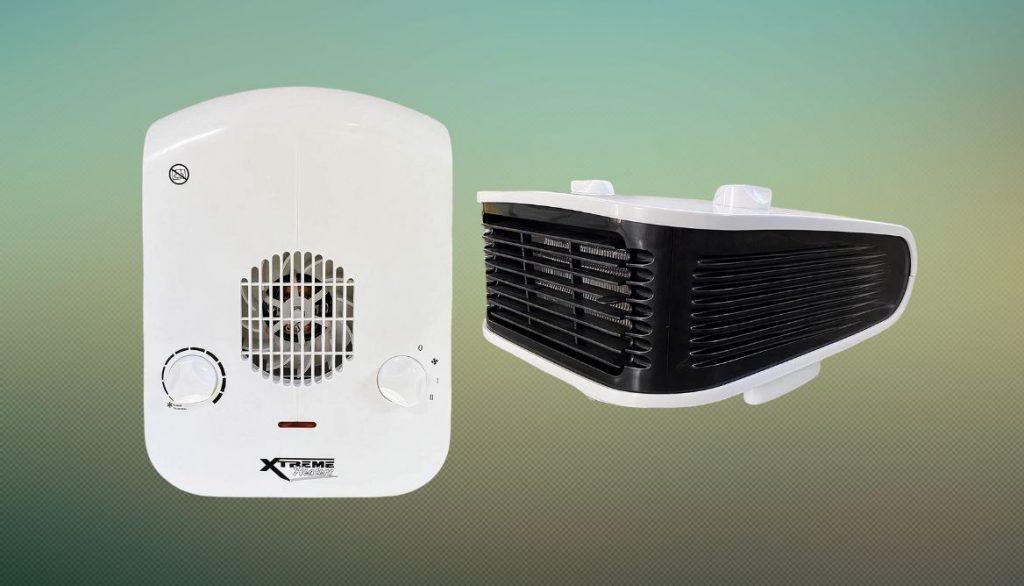
When it comes to heating an RV without using propane, an electric heater is a great option. Electric heaters are easy to set up and use, and they are typically very affordable. In addition, they can be moved around easily and stored when not in use.
Electric heaters come in a variety of sizes and styles, so you can choose the one that best fits your needs. Most electric space heaters are rated to provide enough heat for an RV of up to 400 square feet, so they can handle most RVs quite comfortably.
Heat Generating Capacity: | 5,000 to 5,200 BTUs |
Heat Consumption Ability: | 1500 Watts |
Price: | Around $35 |
When shopping for an electric space heater:
- Make sure to get the electric heaters with a thermostat control so that you can easily regulate the temperature inside your RV.
- Also, be sure to check the wattage of the portable electric heater or heat pump and make sure that your RV’s wiring can handle the load.
To maximize energy efficiency, be sure to keep the doors and windows of your RV closed when using the electric space heaters. This will help to ensure that all of the heated air stays inside the RV and helps to keep it warm.
2. Oil Heaters
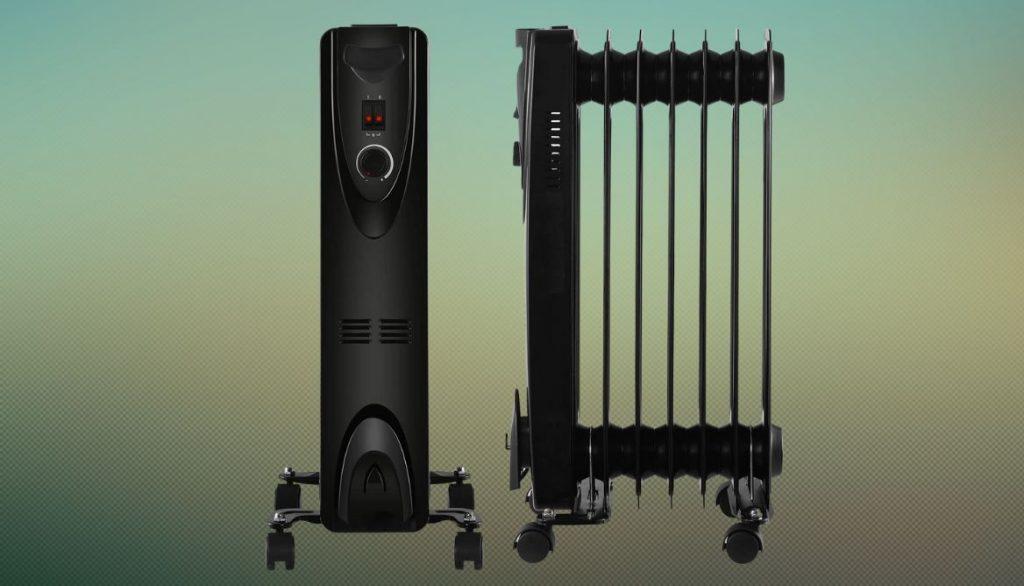
Oil heaters are a popular and effective way to heat an RV without propane. They use small amounts of oil that are burned as fuel, creating a steady and reliable source of heat. Most models feature adjustable thermostats, so you can control the temperature and set the perfect level of warmth for your RV.
Heat Retention Time Period: | 1 to 2 hours |
Power Consumption Ability: | 1500 Watts |
Price: | $60 to $100 |
Features:
- Oil heaters are easy to maintain, and their compact size makes them easy to store.
- An oil heater is an effective way to heat your RV without using propane.
- Oil heaters usually have a fan that helps to circulate hot air and provide a comfortable temperature.
- The heating element heats the oil, which is then transferred through a series of pipes into a reservoir, where it is heated and then circulated into the RV.
- They are relatively quiet than space heater, so you won’t disturb your neighbors with a loud noise.
Warning: Be sure to follow the manufacturer’s instructions and use carbon monoxide detector when using an oil heater as it could cause a fire if not used properly.
3. Radiant Heater
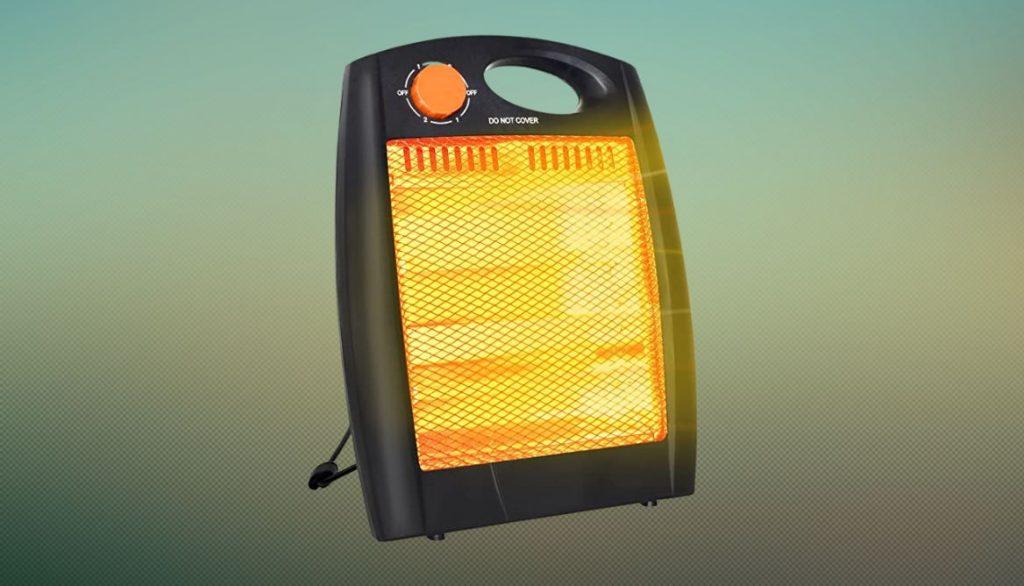
Radiant heaters are also a great alternative to traditional propane heaters for those looking to heat their RV without using propane. Radiant heaters use electricity to generate heat that is emitted in the form of infrared radiation.
This radiation heats any nearby objects, such as people or furniture, directly, and then warms the surrounding cold air. Unlike convection heaters like space heater which require air circulation, radiant heaters are silent and require no ventilation.
Heat Generating Capacity: | 5,000-5,200 BTUs |
Power Consumption Ability: | 1500 Watts |
Price: | About $130 |
They are also very energy efficient and can be used to heat specific areas of your RV more quickly than with a convection heater like a water heater or space heaters.
4. Heated Flooring
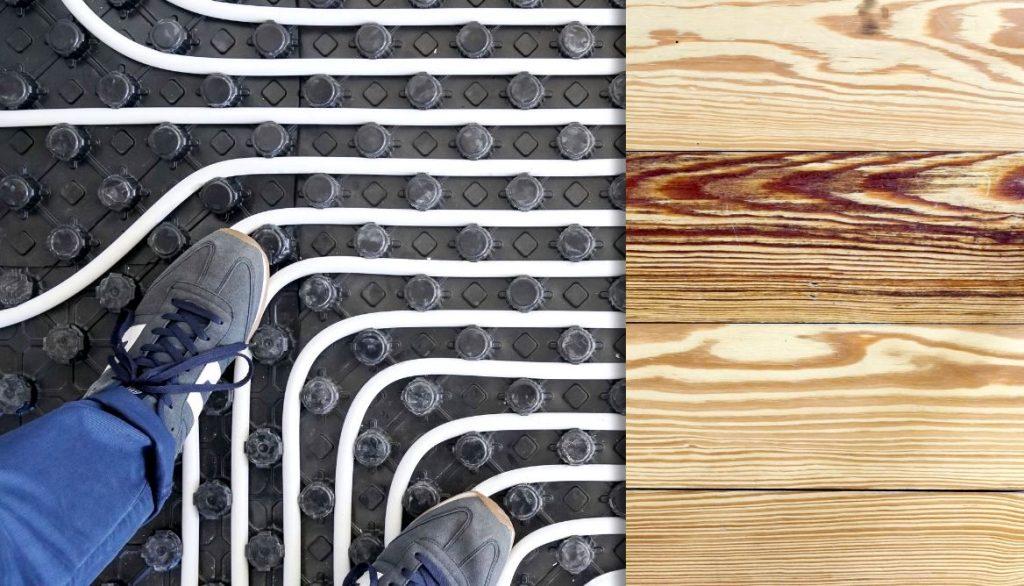
Heated floors use electric heaters that are installed directly into the floor, providing gentle, even heat throughout the RV. This type of heating system is great because it is energy-efficient, safe to heat inside, and easy to install.
Main Benefit
One of the biggest benefits of using heated flooring is that it eliminates cold spots and drafts from entering your RV. Not only will this keep your RV comfortable, but it also helps with air circulation, which can help reduce allergens and pollutants in the air.
Installation
Installation is relatively easy and does not require any major modifications to your RV. Most RV owners can do the installation themselves in a day or two. You may need to purchase special tools or materials, so make sure you do your research before getting started.
Can You Convert Your RV Furnace To Run On 110 Electric?
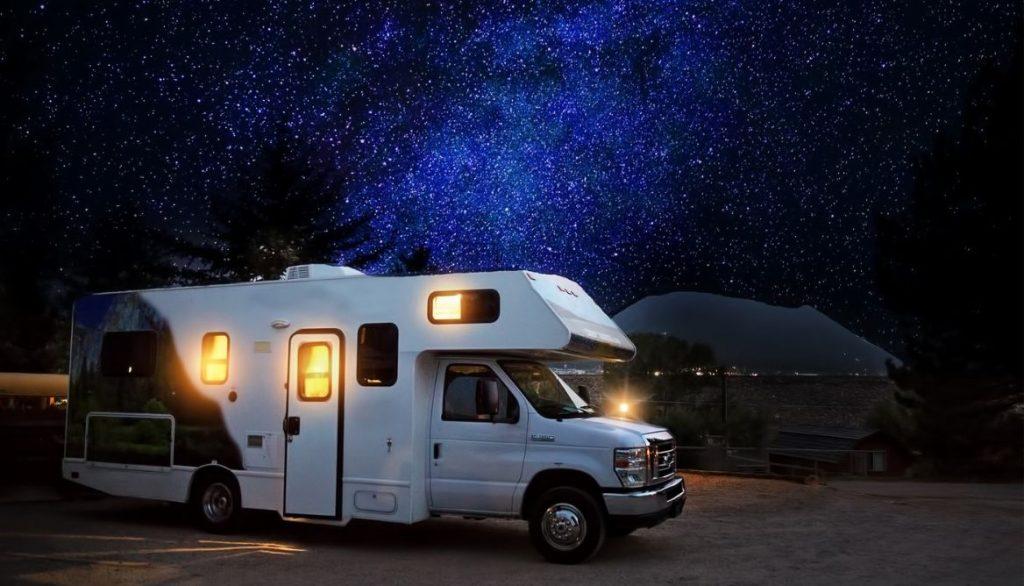
If you’re an RV owner, you may have wondered if you can convert your RV furnace to run on 110 electric. The short answer is yes, you can convert an RV furnace to run on 110 electric.
But there are some things you should know before you decide to do so.
The Cost Of The Conversion
Converting an RV furnace to run on 110 electric can be a costly endeavor, especially if the parts need to be ordered. This includes:
- The cost of the wiring and equipment heat pump
- Labor costs
- Other supplies or services that may be needed.
It’s important to make sure that you have a good understanding of all the costs before you begin the conversion process. Additionally, it’s a good idea to get quotes from multiple professionals before you decide on the final cost.
The Complexity Of The Conversion
Converting an RV furnace to run on 110 electric can be a complex and time-consuming task. In some cases, the furnace may require complete disassembly, rewiring, and reinstallation. This means that a professional is likely needed to ensure the safety of the conversion and that it’s done correctly.
Warning: If is used the wrong type of wiring, it can lead to a fire hazard and potentially serious injury. It’s important to research the necessary steps before attempting this type of conversion.
Safety
This conversion is not a job for beginners. Electric furnaces can be dangerous if installed improperly, and even small mistakes can lead to fires or shock hazards. Before attempting this conversion, make sure you understand the safety precautions necessary and have the appropriate knowledge to do it correctly.
Attention: Make sure to follow all local building codes when making any changes and always have an experienced technician on hand to double-check your work.
RV Furnace Adds Condensation To Your Windows
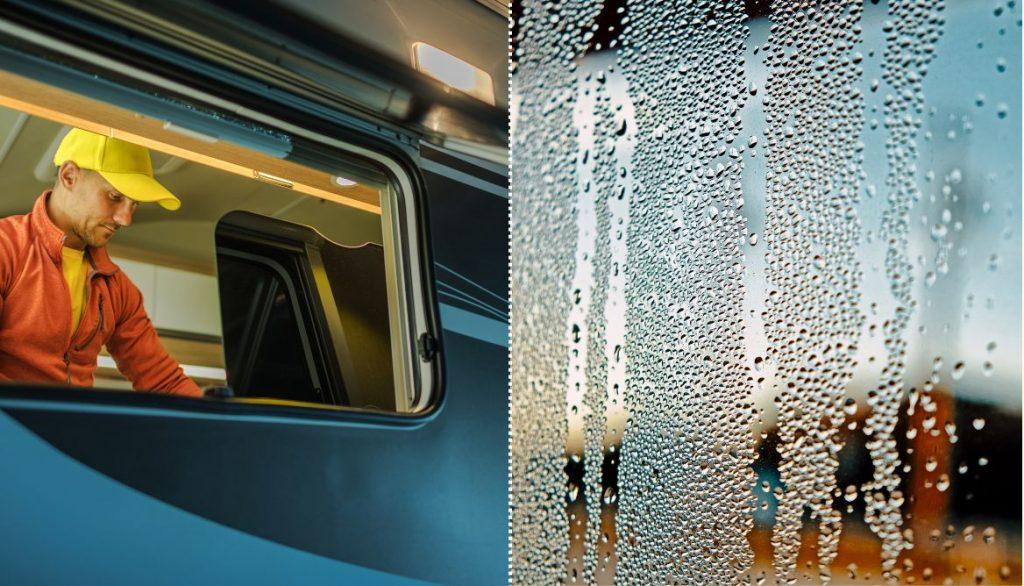
Are you an RV owner who has noticed condensation on the windows of your vehicle? If so, the culprit could be your RV furnace. It’s important to understand why this happens and what you can do to prevent it from becoming a problem. Here we’ll discuss why your RV furnace adds condensation to your windows and how you can reduce or eliminate it.
What Causes Condensation On Your Windows?
- Temperature Difference: When the air inside your RV is warmer than the temperature outside, moisture condenses on the glass.
- Humidity: High levels of humidity in the air will cause condensation on windows.
- Leaks: If there are any air leaks in your RV, outside air can enter and bring with it more moisture, which can lead to condensation on the windows.
How Can You Prevent Condensation On Your Windows?
- Make sure to properly ventilate the area. Make sure to open the windows, even in cooler weather, to allow fresh air to circulate and reduce condensation buildup.
- Keep the air temperature inside your RV consistent. If the temperature of the air inside your RV is too different from the temperature outside, it can cause condensation to form.
How To Keep Warm In An RV: Winter Accessories To The Rescue
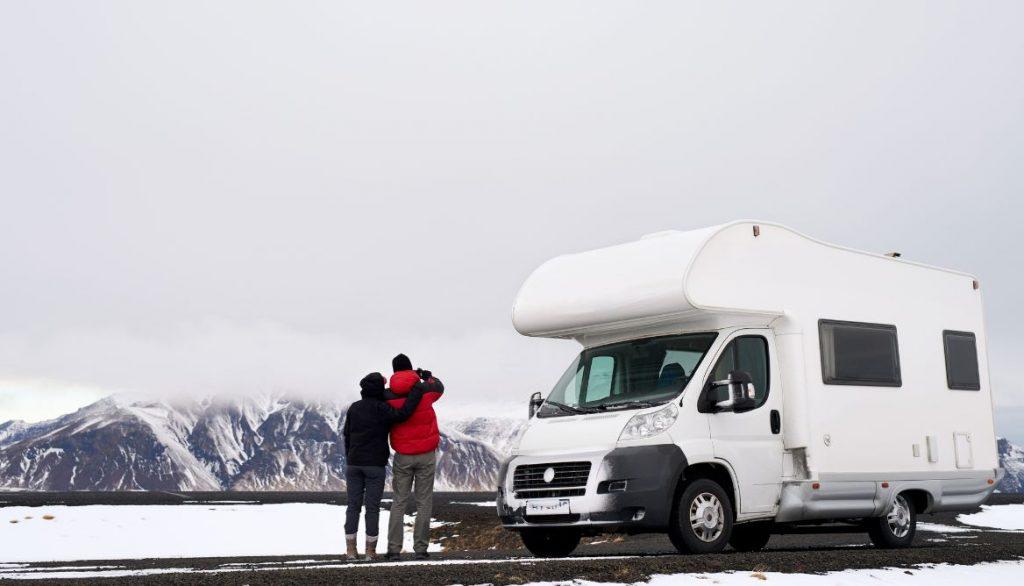
Winter camping can be an enjoyable experience, but it can also be challenging if you don’t have the right gear to keep you warm. If you’re planning to winter camp in an RV, it’s important to make sure you have the necessary accessories to keep you comfortable during those cold winter nights.
Fortunately, following must-have accessories can make a huge difference when it comes to staying warm in an RV.
1. Warm Clothes
Dressing in layers is one of the best ways to stay warm when you’re spending time in an RV during winter.
Process:
- Start with a good base layer, like a long-sleeve thermal top and/or bottom, then add some other layers such as a fleece or sweater over the top.
- For your feet, thick socks and boots are essential, as well as insulated hats and gloves for those extra cold days.
- Be sure to dress for the weather outside, not just inside your RV, as it can be much colder outside than inside.
- Keep your sleeping bag close by and use it when needed to stay extra warm.
2. Blankets

Blankets are an essential winter accessory when living in an RV. It’s because:
- They provide an extra layer of warmth and comfort that can make a huge difference in your overall level of comfort.
- Additionally, blankets help to keep drafts out and can be used to trap heat when you are in colder climates.
Some best blankets:
- Fleece blanket
- Down blanket
- Electric heated blanket
- Wool blanket
- Flannel blanket
3. Rugs

Rugs can also provide a great extra layer of warmth for your RV during the winter months. Not only can they help keep your feet warm, but they can also help reduce drafts and make sure the heat from the furnace is retained.
Rugs come in many different materials, so you can find one that best fits your needs. Faux fur or wool rugs are excellent for insulation and providing extra warmth. Alternatively, cotton rugs may provide more comfort and breathability.
Be sure to choose a rug that’s easy to clean and resistant to mold and mildew in case of accidents or spills.
Tips to use rugs to warm your RV:
- Invest in high-quality rugs made of insulating materials such as wool or cotton.
- Layer multiple rugs to maximize heat retention.
- Place rugs in the most trafficked areas such as the living room, bedroom, and kitchen.
4. Hot Water Bottles

Hot water bottles are affordable and can provide a lot of extra warmth. These bottles are easy to use and they don’t require any additional power or setup, making them perfect for camping.
You can fill hot water bottles with boiling water and then place them inside your RV. This will help to keep the air inside your RV and make it more comfortable. You can also keep hot water bottles under your blankets or in your bed to provide extra warmth and comfort.
- When using hot water bottles, you should always be careful to avoid burns.
- Make sure that the temperature of the water is not too hot and never leave them unattended or near children.
- Additionally, you should be careful when placing them on furniture or surfaces as the heat from the bottle may cause damage.
How To Make RV Furnace More Efficient – FAQs
How Can I Heat My RV More Efficiently?
Making your RV furnace more efficient can be accomplished by checking for proper airflow, sealing any drafts, and insulating the RV walls. Additionally, consider investing in a programmable thermostat to make sure you’re not running your furnace more than necessary.
How Can I Make My Propane Furnace More Efficient?
To make your propane furnace more efficient, you should ensure it is properly maintained and serviced. Additionally, you can add insulation to the furnace to prevent heat loss and improve efficiency.
Can You Put A Filter On An RV Furnace?
Yes, you can put a filter on an RV furnace to make it more efficient and reduce the amount of dust and dirt that gets circulated throughout your RV. A furnace filter is easy to install and should be checked regularly and replaced every few months.
Where Does An RV Furnace Get Air?
RV furnaces get air from either inside the RV or outside the RV, depending on the type of furnace. Some models are designed to draw air from outside and exhaust air outside, while others rely on air circulation within the RV itself.
Is It Cheaper To Heat An RV With Propane Or Electricity?
It largely depends on the current cost of propane and electricity in your area. Generally, propane is usually cheaper than electricity, but it also depends on how much you’re using and how efficient your furnace is.
What Happens If You Run A Furnace With No Filter?
Running a furnace with no filter can lead to increased wear and tear on the unit, as well as reduced efficiency due to dirt and debris build-up. Without a filter, the unit can also become clogged and potentially dangerous due to the buildup of carbon monoxide.
Conclusion
Making your RV furnace more efficient is an easy and cost-effective way to save on your energy bills. By using electricity on an average scale, installing solar panels, sealing the air leaks, insulating your water lines, keeping the area clear, inspecting and cleaning the furnace regularly, using proper insulation, and considering alternative heating sources, you can enjoy a more efficient and comfortable RV experience.
With the right modifications, your RV furnace can last for many years, and you’ll be able to enjoy your time away from home without worrying about running up an expensive energy bill.
Have you made any modifications to your RV furnace to increase its efficiency? We’d love to hear about it in the comments below!

Asen is the owner and main contributor of Camper Life. He is a full-time RV traveler since 2018. He loves camping in nature, fishing, and spending time with his family.
Striving to provide the most valuable information about campers and RVs, he shares everything he learned over the years.
That’s why Camper Life is one of the best sources to find information about RV traveling and living.



